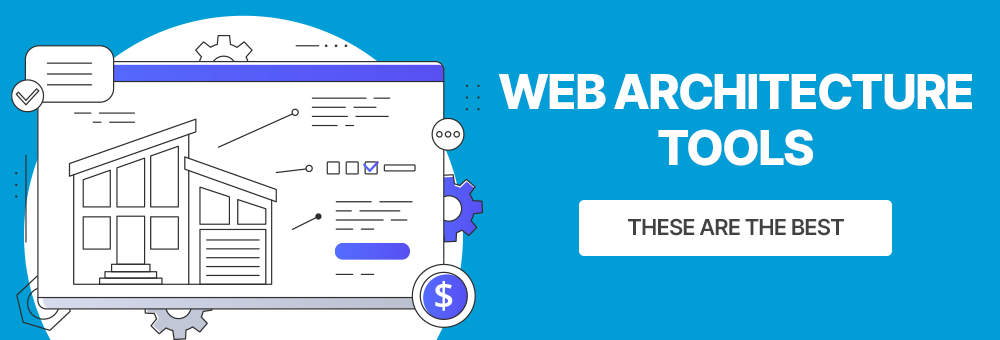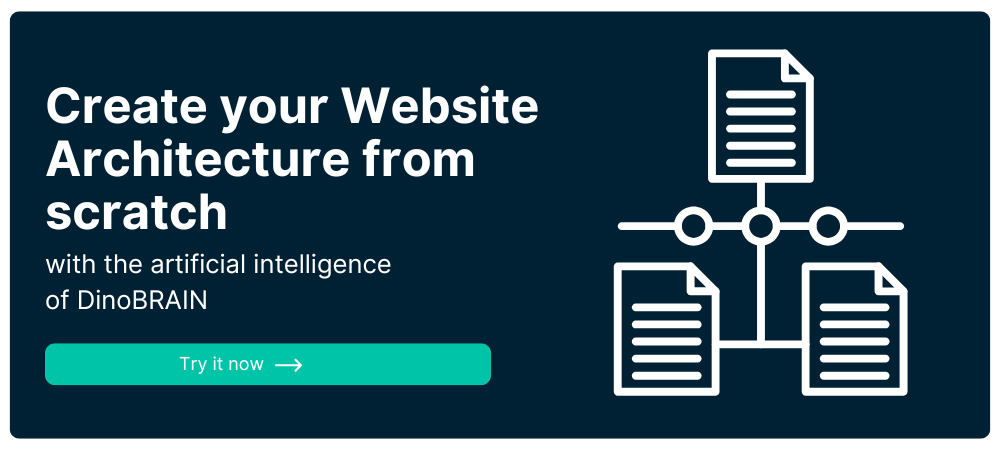Website architecture tools are essential for creating an effective site structure. These tools help organize content, enhance usability, and improve search engine optimization.
A clear website structure ensures that users can navigate easily.
These tools also allow for better content management and collaboration between team members during the design and development process.
Analyzing site structure
Understanding the significance of website structure is essential for efficient navigation and effective search engine optimization.
Analyzing site structure involves assessing various components that contribute to the overall user experience and functionality of a website.
Importance of Website Structure
A well-organized website structure enhances user experience by making information easily accessible. It helps search engines crawl and index pages effectively, thus improving visibility in search results.
A clear hierarchy also assists in guiding users through the content seamlessly.
Key elements to consider
When analyzing website structure, several key elements are crucial for creating an effective design.
Hierarchical Organization
- Organizing content in a logical hierarchy ensures that users can intuitively find information.
- A top-down approach allows for grouping similar topics, facilitating easier navigation.
- Maintaining a flat hierarchy for key pages ensures quick access to important content.
URL structure and best practices
- Using descriptive URLs improves readability and understanding of page content.
- Avoiding excessive parameters and special characters enhances user trust and SEO.
- Including keywords in URLs can positively impact search rankings and relevance.
Tools for Analysis
Various tools are available to assist in analyzing website structure.
These tools help visualize the hierarchy, assess link structures, and identify potential issues that could affect user experience and SEO.
Using such tools can streamline the process of making informed improvements to a website.
4 Best tools for Website Architecture
Various tools are available to enhance the planning and organization of website structure. These tools assist in creating an efficient layout that benefits both users and search engines.
DinoRANK
DinoRANK is a valuable tool for assessing and optimizing website architecture efficiency. It provides unique features tailored to the needs of webmasters and SEO professionals.
Regarding web architecture, DinoRANK has the DinoBRAIN module that generates web architectures, aided by AI.
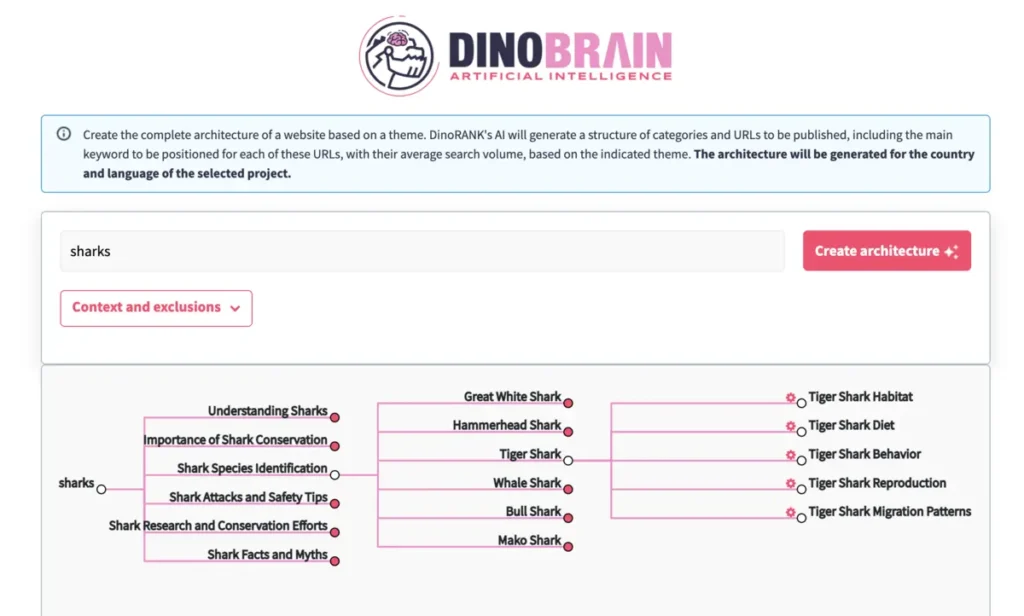
This functionality creates a complete thematic tree, whose topics and subtopics are concepts related to the main keyword and that already have searches and interest from users.
You only have to give the tool one input: the seed keyword of your project.
And DinoBRAIN will create the complete web architecture, which you can replicate on your site.
Screaming Frog SEO Spider
This technical crawler analyzes your site’s structure similarly to how Google does. It detects orphan pages, broken links, and assesses crawl depth.
Screaming Frog generates visual sitemaps of your architecture and optimizes internal linking to redistribute link equity to key pages.
Sitebulb
An audit tool that utilizes AI to suggest thematic clusters and “hub-and-spoke” structures.
It examines page distribution by click depth from the homepage and enhances semantic relevance by grouping related content. You can find out more about Sitebulb here.
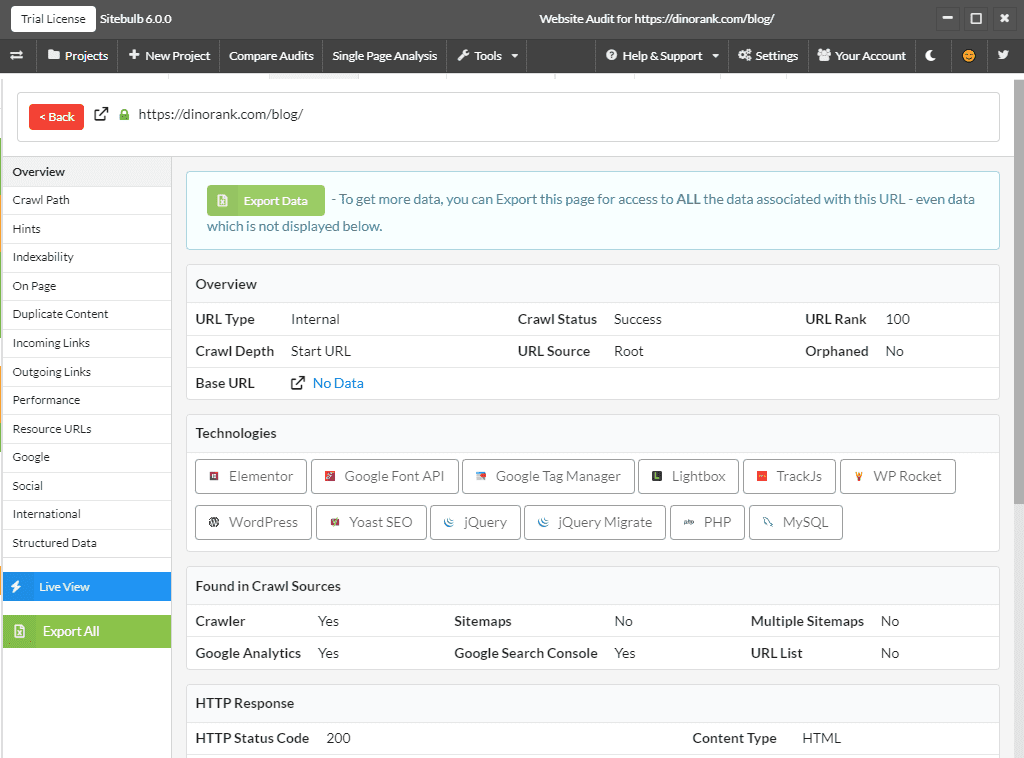
DeepCrawl (now ‘Lumar’)
It is an advanced crawler designed for large websites.
They identify underperforming pages, measure Google’s crawl efficiency and prioritize key navigation paths and architecture (e.g. categories > subcategories) to improve technical SEO and usability.
Lumar is very easy to use and you have your web architectures optimized in seconds.
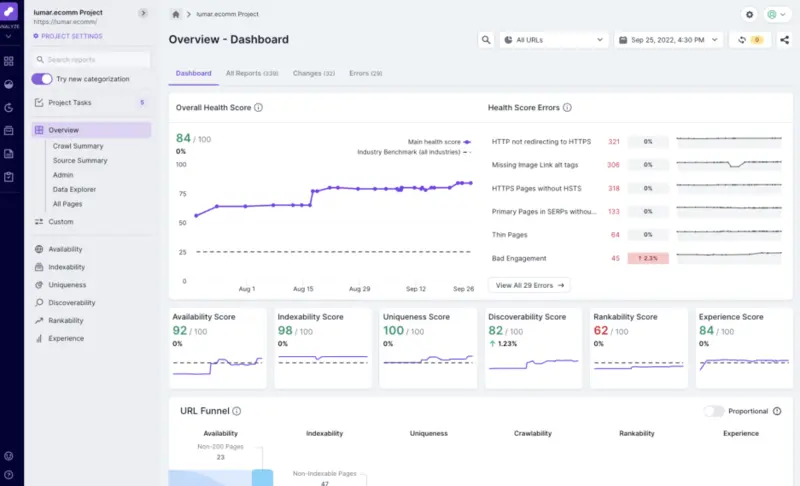
Integrate these last 3 tools with DinoRANK’s DinoBRAIN to incorporate keyword data and performance metrics into your architectural strategy.
This combination can provide a comprehensive approach to optimizing your website’s structure.
Overview of Website Architecture Tools
Website architecture tools provide a range of functionalities to streamline the creation of visual sitemaps and optimize the structure of web pages.
These tools often include features for collaboration, content management, and SEO optimization. They cater to different levels of expertise, from beginner-friendly applications to advanced solutions suitable for experienced developers.
Criteria for choosing the Best Tool
Selecting the right tool for website architecture involves evaluating several factors to ensure it meets specific needs.
· Features and Benefits
- Visual sitemap builders for intuitive layout creation.
- Collaboration capabilities that allow team members to work together in real-time.
- Integration with design software to facilitate seamless workflows.
- SEO tools that guide the optimization of site structure.
· Pricing and Budget Considerations
The cost of website architecture tools can vary widely based on features and usage. Open-source options may be free but lack support, while premium tools often offer advanced features at a higher price.
It is essential to assess available budget and the long-term value each tool provides to ensure a wise investment.
Generating Website structure diagrams
Creating effective website structure diagrams is essential for visualizing the layout and organization of a site. These diagrams facilitate communication among team members and provide clarity during the design process.
Benefits of visual sitemaps
Visual sitemaps serve numerous purposes that enhance project outcomes:
- Improve understanding of site hierarchy.
- Facilitate better team collaboration and feedback.
- Help identify potential gaps or redundancies in content.
- Enhance communication with stakeholders.
Using a sitemap generator
Sitemap generators simplify the process of creating structured diagrams. Many tools allow for easy customization and rapid changes.
How to create a sitemap fast?
To quickly generate a sitemap, follow these steps:
- Choose a sitemap generator tool.
- Enter your website’s URL or details.
- Adjust settings and preferences for structure.
- Generate and review the sitemap.
Some of the most popular and effective tools for creating sitemaps are:

Planning website structure and strategies
Careful planning is essential for an effective website structure. It involves defining the hierarchy, organizing content strategically, and implementing best practices for usability and SEO.
Steps in the website planning process
The planning process encompasses various stages to ensure comprehensive organization.
- Defining goals and objectives.
- Identifying target audience and user needs.
- Sketching a preliminary sitemap to visualize structure.
- Gathering existing content for evaluation and integration.
Effective use of templates
Templates can streamline the website planning process, allowing for a consistent look and feel across pages.
Utilizing templates helps in:
- Maintaining uniformity throughout the site.
- Simplifying the design process by providing ready-made layouts.
- Saving time and resources during development.
Strategies for better SEO
Strategic planning for SEO is critical in the website development process. Various techniques can enhance online visibility.
Visual prototypes can facilitate testing and modifications before full-scale development begins. They allow teams to:
- Identify usability issues early.
- Gather feedback from stakeholders effectively.
- Ensure that design aligns with user expectations.
Collaboration tools play a significant role in the planning phase. They support:
- Seamless communication between team members.
- Instant updates on project progress.
- Easier sharing of content and resources among stakeholders.

